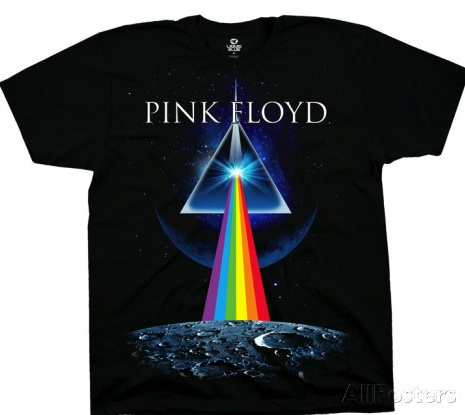A few years ago a close musician friend, Larry Norman, passed away at 60 years old n Salem, OR. The family, following the instructions of his will, had him buried in one of his favorite t-shirts “Just visiting this planet”.
A few months ago another close friend, Bob Sterne passed away at 73 years old. He was the FOH sound engineer for Crosby Stills Nash & Young and for the last 20 years was the production mgr and FOH for Neil Young. July 30 of this year at a private residence in Portland, some friends hosted Bob’s memorial service. As per Bob’s request, the required attire for the ceremony was an old concert t-shirt.
Band T-shirts first appeared 50 or so years ago. Names of groups started popping up on children’s clothes in the mid-60s. The Beatles and the Dave Clark Five were early adopters, two bands that understood merchandising. Then came the hippy phenomenon of tie-dye with a logo slapped on top. What broke band T-shirts was mass distribution, just like everything else.
The idea of branding yourself with a musician’s name wasn’t new, according to Johan Kugelberg, author of Vintage Rock T-Shirts, “Bobby-soxers [in the 40s] began the trend of writing the name of their favorite singer across the back of their jackets – a flourish of Frank, or a swirl of Sinatra. Band T-shirts were a later extension of that.”
By broadcasting love for an artist on their chest, Kugelberg says, a person could suggest a mystical connection between themselves and a superstar. The band T-shirt reveals contradictory impulses in its owner, especially when that owner is a teenager. It marks a desire to be seen differently, but also to fit in; it signifies a split from your parents, but also a wish to be part of an alternative group of peers, even if you haven’t met them yet.
Kugelberg thinks T-shirts are status symbols. “They’re middle-class luxury items, no doubt. It’s luxury consumption. It’s what brand you slap across your chest.” The need to associate with a star, is about much more than money”.
That explains why band T-shirts are often embraced by alternative genres, and why after tie-dye, the rock T-shirt market was dominated by the black cotton of heavy metal. The grunge boom did similar business, but irony also came into play, with naff logos of soft rock bands such as Boston worn as signs of self-awareness. Later, this trend was adopted by the mainstream, and soon band T-shirts trickled into high street fashion.
Sometimes, T-shirts would become better known than the band. The Ramones probably sell a great many more T-shirts now than they did records in their heyday.
But why do we still cling on to band T-shirts as adults? It’s partly nostalgia, Kugelberg says, but it goes deeper than that. “It’s like Chumbawamba said: we sing songs that remind us of the good times, we sing songs that remind us of the bad times. It’s about using moments of our frivolous youth as comforters.” A T-shirt can help us acknowledge the changes we’ve gone through in our lives. “When we’re approaching middle age, we want to show why we were part of something meaningful. Especially now, when everything is so accessible. Consumption now moves at hyperspeed, and we [as adults] are incapable of tracking the passions of youth – so we acknowledge ours in this way.”
Band T-shirts may stain, tear and age, but forget them completely, and we forget who we are, too.

